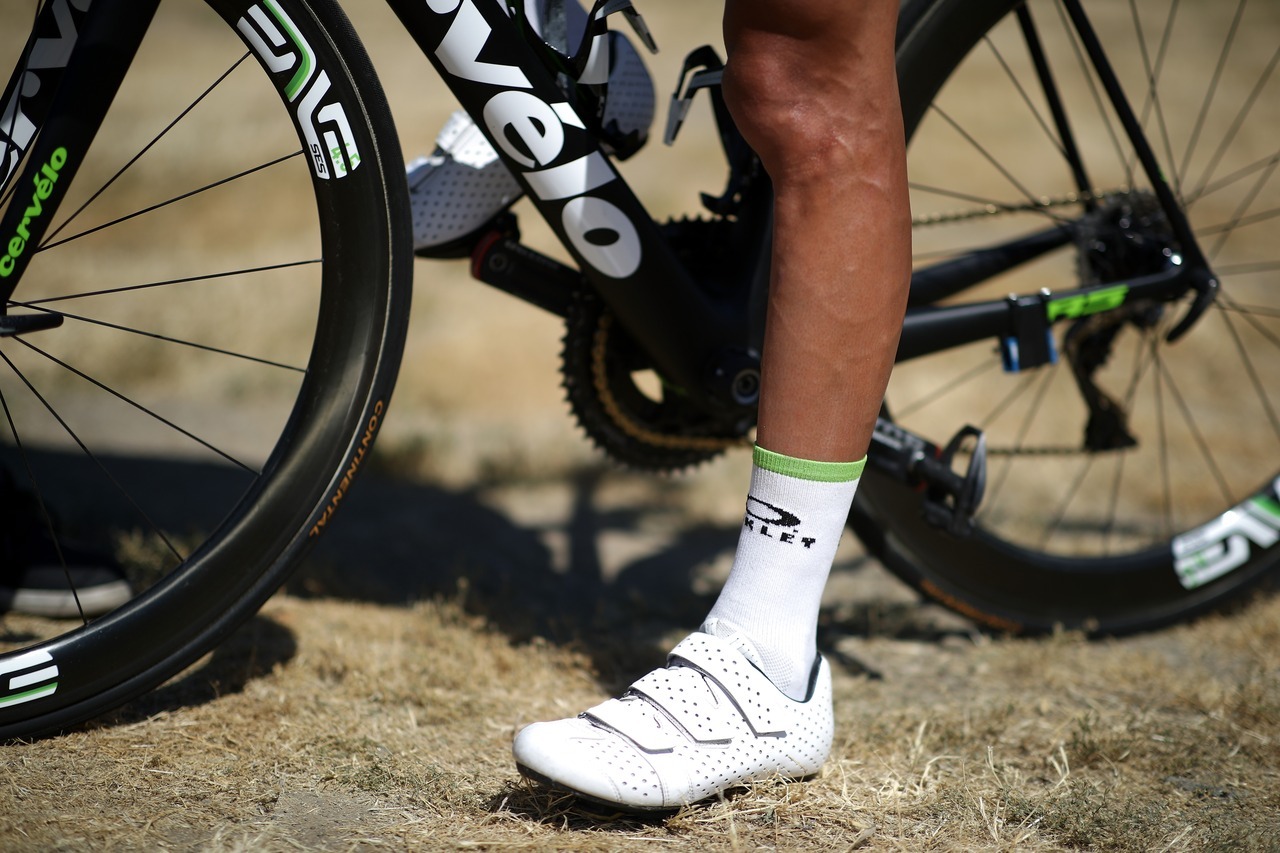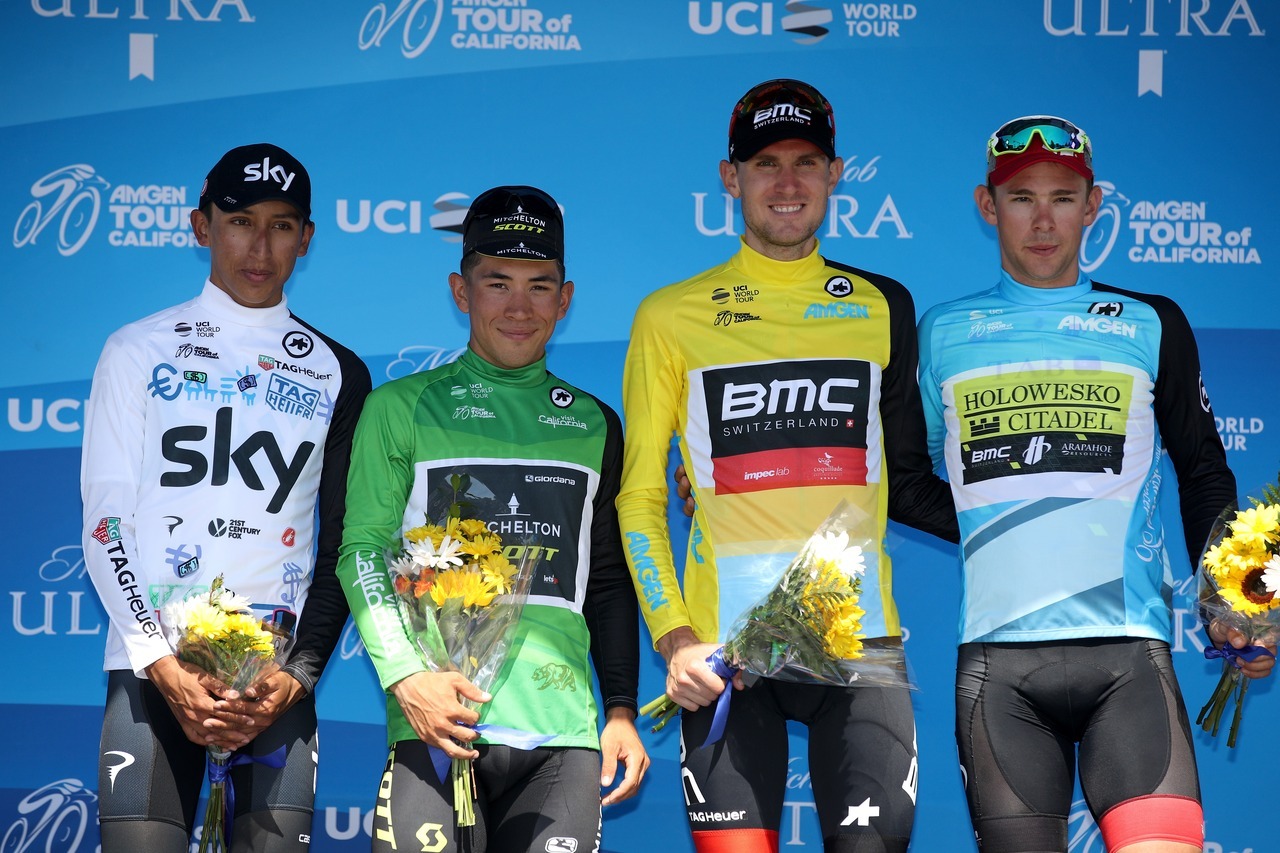It’s a calendar clash with the Giro, many star riders are in the Giro or on Teide, it’s got World Tour status without really having the World Tour obligations and more. It all works well.
Plenty of races overlap during the season. At first it sounds like a bad idea with half the peloton in one place and the rest elsewhere: how can the public know which race to follow when the best riders are split between two events? Only it’s not so simple, for starters “the public” isn’t a homogeneous entity, people in Italy want the Giro, others in California may prefer their local event. More importantly having the top riders all at the Giro wouldn’t work, some would be aiming for the Tour de France and so either avoiding racing all together, abandoning early or using the race as mere training, all while excluding hungry riders who want to race hard in Italy. So having other races on at the same time is probably a good thing. Almost nobody goes to the Giro for training and conditioning but California has a role here allowing some to resume racing after a spring campaign and young riders can be brought on. Being a training race can sound diminutive but is the Critérium du Dauphiné worse for this? Surely not, nor are Tirreno-Adriatico, Paris-Nice and other week-long stage races that might be prep on the way to something bigger but provide plenty of good racing along the way. Similarly the development aspect is no bad thing given past winners like Julian Alaphilippe and George Bennett.
But should these other races like California be in the World Tour? Again the answer seems simple, probably not in order to preserve a calendar of the best races. Again it’s more nuanced, to have the Tour of California outside of the World Tour would look odd and signal it’s not the top event it wants to be, especially as pro cycling needs a flagship race in the US in order to call itself a “world tour”. California is now a World Tour event but came in with other races and are what I’ve called NEWTs, new world tour races, which have fewer ranking points and are not compulsory for the World Tour teams. So they’re World Tour in label but not necessarily any more, it’s a flexible system that means the likes of Groupama-FDJ who have little interest in marketing French insurance and lottery tickets to the US don’t need to go so they can free up space for US teams that long and even need to race. The TV coverage from the race goes a long way to justifying the budgets of these US domestic teams. It works for everyone just as long as you sit back and enjoy the racing, don’t try to look up the rules about which team can ride what as they quickly get confusing.

It’s a big shop window. The US consumer market for bikes is very large and the Tour of California is one way to tap into it so we can see why teams with prominent bike sponsors are keen to attend, for example Sky can’t sell their main sponsor’s wares – TV subscriptions – but Pinarello are bound to be interested and you can see their marketing trucks at the race. This year’s route has even had a stage outside the Specialized corporate HQ and among the press images sent out every day there’s a lot of bike and gear photos which is unusual.
Another method to reach US fans has been to recruit US riders who for some time were premium items on the transfer market, everything else being equal an American rider could earn more than a non-American such was the demand. But this seems to have calmed down, more out of demand than supply. The US has a steady supply of riders into the World Tour but no star rider nor the kind of rider who is among the best in a particular niche, such as a top sprinter, a victorious climber, a TT specialist. But in Tejay van Garderen they just might have a home winner again.

Conclusion
The calendar clash sounds problematic but it works out well, the Giro might be missing out on some sprinters but would they be in Italy if there was no other race? Maybe not. Simultaneous events allow part of the peloton to focus on the three week Giro, another part to tackle one week of racing with fewer mountains and there’s room for more than one race at time in the media, especially as so much coverage is local. No World Tour would be worth the label if it didn’t have events around the world and the US is a key consumer market for the cycle industry and the Tour of California which has been going since 2006, along with a handful of other races like the Tour of Utah, help keep several US teams going.


Well, truth is that sprinters’ prep usually wasn’t that hindered by racing two or three GTs; it’s not at all like racing for GC, nor as hard as trying the breaks.
It’s a pity that in very recent years fragile sprinters with little fondo and a very short peak started doubting about the Giro, afraid of losing something in July.
Otherwise, we could easily have a strong sprinters field in every GT, as it usually happened – it’s not like they’ve a lot of other occasions to win big. They’re already winning the most meaningless sort of races, imagine if they even win less and from time to time…!
But the whole sprinters situatios is far from being the main “problem”. The *one* guy who’s *really* missing at the Giro, and always was, is Peter Sagan. Cannondale & Specialized – ouch, he’s never missed a single Tour of Cali since he’s a pro.
Does RCS put interest in getting Sagan or top sprinters at the Giro? In terms of calendar it might be too much considering his forte is classics then Tour?
Sagan (or a similar rider like Matthews, Alaphilippe etc) could have taken stages in the Giro but it opens the door for others too, Bora can race Bennett, Sunweb can line up behind Dumoulin and so on. RCS seem to pay teams according to their startlist so bringing a star sprinter could earn them more but Mauro Vegni will be delighted with Viviani winning three, it matters for the domestic audience, the largest audience.
A possible answer to that point of Gabriele’s would be to hold part of a GT (Giro or Vuelta) in the US.
I’m not talking of an opening weekend, but a full week or more before a couple of rest and transfer days.
The US is such a vast, varied and beautiful country that it would be a refreshing change – particularly in the case of La Vuelta which is somewhat restricted in its possible home locations.
I think it could be a great thing, perhaps even alternate between the Giro and Vuelta and / or every couple of years, to hold part of a GT on the North American continent?
Don’t you think that jet lag would make this untenable?
Maybe they could make it last three weeks and call it The Tour d’America. And hold it in August. And shut down the Vuelta too. Or maybe move it to Mexico. And hold the football world cup in a desert.
Thank you for yet another thoughtful piece putting things in context and proportion. There is probably a disconnect of US having many large bike companies while interest in bike racing has sadly gone from inspiring down the drain to notorious.
All countries rally around local heroes, too bad that there is no American like Peter Sagan.
The World Tour label is effectively meaningless. It means about the same as ‘professional bike race’. If it carries on too much then all races apart from the Tour and the monuments will be worse off as the fields will be too watered down. As Gabriele says top classics stars and sprinters are already sparse at the Giro and now the Tour of Britain is taking them off the Vuelta too. California is warm year round isnt it apart from at altitude, can’t it be an end of season affair?!
Warm year round, milder than much of Europe but they had to move from February to May because the earlier slot had the peloton frozen in icy rain and if you can get the same in De Panne it wasn’t the Californian image they wanted.
Sounds like a classic case of the UCI trying to please everyone. Or at least everyone with money. At some point they’ll have to say no when someone asks to join the World Tour.
Reading you compare this combination of a training camp and a vacation called AToC to races like Paris-Nice, T-A or Le Dauphiné hurts and I’m sure you don’t mean in earnest that victory there or here means the same thing to any of the pros (except for maybe racers in second-tier US-teams).
And that doesn’t have much to do with tradition but the layout and approach of the race. Strade Bianchi has about the same age as the AToC but it’s fiercely contested by the best specialists for races like that. Whereas in Cali … . But how should it be different, the Hollywood hills are close.
A win isn’t the same thing as the Dauphiné because the course isn’t comparable, just that being a preparation event is not a bad thing, i the right course can mean good racing.
Now you’ve really made me curious. Does that mean you consider the racing that happens at the AToC “good racing”. So far I have never felt asleep in front of the TV in my hole life. But if I ever wanted to try if I manage to do that I would certainly choose one of that race’s typical stages run on mostly straight roads as wide as three or four departmental roads in France.
Why did you include that shot of the American with the antlers? He and his ilk have caused me to scream at the tv since I began watching the TOC when it was first shown on SBS. So many idiots on those climbs that get way too close to the riders. Fwiw I love the TOC and the other week long races. It’s a GT compressed with great scenery, exciting racing and rarely becomes tedious and boring. Better for the health of the riders too I’d think.
In part because it’s so typical, so identifiable with the race, like the endless rows of inflatables at the Tour of Poland or a camel for the gulf races, you can tell in a second what the race is. Like most I’m all for supporting the riders and having fun…. but not getting in the way or making themselves the story.
Not a bad race by any means. Perhaps my favourite among the exotic ones, if it wasn’t for Amgen sponsoring. I mean, American pharma is typically bad enough, but here we’re talking, for instance, about the company that produces and markets the product Rémy di Grégorio was recently caught with (dEPO). It hurts to see them anywhere near a bike race.
“But in Tejay van Garderen they just might have a home winner again.”
Erm, no. You didn’t really think he’d win did you?